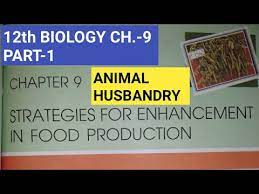Animal Husbandry:
The scientific management of animal livestock.
Includes breeding, feeding, and disease management.
Dairy Farm Management:
Focuses on the management of processes in milk production.
Selection of high-yielding breeds, proper feeding, and shelter, ensuring health.
Poultry Farm Management:
Concerned with the production of broilers (for meat) and layers (for eggs).
Selection of disease-resistant breeds, hygiene, and vaccination are essential.
Fisheries:
Culturing fishes, including marine and freshwater varieties.
Includes pisciculture and prawn or shrimp farming.
Apiculture (Beekeeping):
Management of hives of honeybees for honey production.
Bees also aid in pollination of crops.
Plant Breeding:
Improving the genetic makeup of the crop plants.
Goals: Higher yields, disease and pest resistance, improved quality.
Methods of Plant Breeding:
Hybridization: Crossing between genetically dissimilar plants.
Mutation Breeding: Inducing mutations and selecting the desired mutants.
Green Revolution:
Rapid increase in crop yield through improved variety.
Introduced by Dr. Norman Borlaug.
Biofortification:
Breeding crops with higher levels of vitamins, minerals, and proteins.
Examples: Golden rice (rich in Vitamin A), iron-rich spinach.
Microbes in Food Production:
Fermentation processes for bread, curd, cheese, and alcoholic beverages.
Lactic acid bacteria promote milk fermentation to produce yogurt.
Single Cell Protein (SCP):
Protein-rich microbial cells from unicellular organisms.
Examples: Spirulina can serve as food and nutritional supplements.
Tissue Culture:
Growing plant cells, tissues, or organs in a sterile nutrient medium.
Helps in propagating plants in disease-free conditions.
Somaclonal Variation:
Variations seen in plants produced by tissue culture.

Comments
Post a Comment